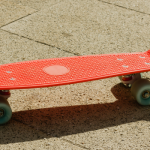In recent years, electric skateboards have gained immense popularity as a convenient and eco-friendly mode of transportation.
These high-tech boards combine the thrill of traditional skateboarding with the efficiency of electric propulsion, offering riders a unique and enjoyable experience.
However, mastering the art of riding an electric skateboard requires a combination of skill, balance, and safety awareness.
In this guide, we will delve into the essential aspects of riding an electric skateboard, covering everything from choosing the right board to mastering advanced maneuvers.
Choosing the Right Electric Skateboard:
Before embarking on your electric skateboard journey, it’s crucial to select the right board that suits your preferences and skill level. Consider the following factors when making your choice:
Board Type:
Longboards:
Longboards are the go-to choice for beginners, offering a stable and smooth ride. Their extended deck length enhances stability, making them an ideal option for those new to electric skateboarding. The longer wheelbase provides a more comfortable and predictable experience, allowing riders to focus on mastering the basics.
Shortboards:
Shortboards are designed for riders with more advanced skills who crave maneuverability and responsiveness. These boards are more compact, making them easier to handle for tight turns and tricks. Shortboards are favored by experienced riders looking to push the boundaries of their electric skateboarding abilities.
Off-road Boards:
For those seeking adventure beyond the city streets, off-road boards are the perfect choice. These boards feature larger wheels and a robust design, allowing them to tackle rough terrain with ease. Whether you’re navigating gravel paths or taking on grassy hills, off-road boards open up a realm of possibilities for the off-road enthusiast.
Deck Material:
Maple Wood Decks:
Maple wood decks are the traditional choice for longboards. Known for their durability and rigidity, maple decks provide a solid platform for riders. They are especially suitable for those who prioritize stability and a classic skateboard feel.
Bamboo Decks:
Bamboo decks have gained popularity for their flexibility and ability to absorb shocks. This results in a smoother ride, making bamboo an excellent choice for riders who value comfort. Additionally, bamboo decks are often lighter than their maple counterparts, contributing to increased maneuverability.
Composite Materials:
For a balanced combination of strength and flexibility, composite materials are an excellent option. These decks often incorporate a mix of materials, providing riders with the best of both worlds. If you’re looking for versatility and a deck that can handle various riding styles, consider a board with a composite deck.
Motor Power and Battery Life:
Motor Power:
The motor power of an electric skateboard determines its acceleration and top speed. Higher wattage motors deliver more power, making them suitable for riders who crave speed and performance. Consider your skill level and the type of terrain you’ll be riding on when choosing the appropriate motor power for your electric skateboard.
Battery Life:
Battery capacity is a crucial factor, especially if you plan on taking longer rides. Consider the range provided by the skateboard’s battery and ensure it aligns with your intended usage. Lithium-ion batteries are the industry standard, known for their reliability and energy density.
Weight Limit:
Before finalizing your decision, confirm that the electric skateboard can comfortably support your weight. Exceeding the weight limit can affect performance and safety. Manufacturers typically provide weight limits for their boards, so be sure to check this specification to avoid any issues.
Can you manually ride an electric skateboard?
Yes, you can manually ride an electric skateboard. Most electric skateboards come with a manual mode that allows riders to use the board without the assistance of the motor.
This feature is handy in case the battery runs out or if you want to conserve power by pushing the board yourself.
However, it’s essential to note that manually riding an electric skateboard requires more effort and skill, as the added weight of the motor and battery can affect the board’s maneuverability.
It’s recommended to practice riding in manual mode before relying solely on electric power.
Safety Precautions:
As with any sport or activity, safety should be a top priority when riding an electric skateboard. Here are some essential precautions to keep in mind:
- Always wear a helmet: Protecting your head is crucial in case of a fall or collision.
- Use protective gear: Knee pads, elbow pads, and wrist guards can prevent injuries in case of accidents.
- Follow traffic laws: When riding on public roads or sidewalks, follow all traffic laws and signals to ensure your safety and the safety of others.
- Stay aware of your surroundings: Be mindful of your surroundings and potential hazards. Avoid busy roads, slippery surfaces, and obstacles.
- Start slow: If you’re new to electric skateboarding, take the time to get familiar with your board’s handling and gradually increase speed and intensity as you gain more experience.
What NOT to Do with an Electric Skateboard?
Electric skateboards are a thrilling mode of transportation, but certain practices can compromise your safety and the longevity of your board. Here’s a guide on what NOT to do with an electric skateboard:
Neglecting Protective Gear:
- Mistake: Riding without protective gear.
- Why to Avoid: Neglecting safety gear, including a helmet, knee pads, elbow pads, and wrist guards, increases the risk of severe injuries during falls or collisions. Prioritize your safety by always wearing the necessary protective equipment.
Ignoring Traffic Rules:
- Mistake: Disregarding traffic regulations.
- Why to Avoid: Electric skateboards are subject to traffic rules, just like bicycles. Ignoring these rules can lead to accidents and jeopardize your safety. Ride in designated areas, obey traffic signals, and follow local regulations to ensure a safe experience.
Overlooking Regular Maintenance:
- Mistake: Neglecting routine checks on the skateboard’s components.
- Why to Avoid: Regular maintenance is essential for the proper functioning of your electric skateboard. Ignoring inspections can lead to unexpected malfunctions, compromising your safety. Check the brakes, throttle, lights, and overall condition of the board regularly.
Pushing the Weight Limit:
- Mistake: Exceeding the recommended weight limit.
- Why to Avoid: Each electric skateboard has a specified weight limit. Going beyond this limit can strain the board’s components, affecting performance and safety. Ensure that your weight is within the recommended range for your specific skateboard.
Riding in Unsafe Conditions:
- Mistake: Riding in adverse weather or poor visibility.
- Why to Avoid: Electric skateboards may not perform well in wet or slippery conditions. Riding in rain or snow increases the risk of accidents. Similarly, low visibility conditions demand extra precautions. Avoid riding in adverse weather and ensure optimal visibility for a safer experience.
Performing Untrained Stunts:
- Mistake: Attempting advanced maneuvers without adequate skill.
- Why to Avoid: Trying stunts or maneuvers beyond your skill level can lead to accidents and injuries. Gradually build your skills, starting with the basics, before attempting advanced tricks. Respect your current skill level and progressively challenge yourself.
Disregarding Battery Levels:
- Mistake: Ignoring low battery warnings.
- Why to Avoid: Riding with a low battery can result in sudden power loss, compromising your ability to control the skateboard. Always pay attention to battery levels and recharge your board in a timely manner to avoid unexpected shutdowns.
Leaving the Board Unattended:
- Mistake: Leaving your electric skateboard in public spaces unattended.
- Why to Avoid: Electric skateboards are valuable and attractive to thieves. Leaving your board unattended increases the risk of theft. Use locks or secure storage when not actively riding.
By avoiding these common mistakes, you can maximize the safety and longevity of your electric skateboard. Stay informed, ride responsibly, and enjoy the exhilarating experience of electric skateboarding without unnecessary risks.
Conclusion:
Riding an electric skateboard can be a thrilling and fun experience, but it’s essential to prioritize safety and choose the right board for your needs.
With this guide, you’re now equipped with the knowledge to make an informed decision when selecting an electric skateboard that suits your preferences and skill level.
Remember to always ride responsibly and have fun. So go out there and hit the streets on your new electric skateboard adventure.
![Why do skateboarders hate scooters? [Reasons + Tips] Why do skateboarders hate scooters? [Reasons + Tips]](https://bedoper.site/wp-content/uploads/2023/04/Why-do-skateboarders-hate-scooters-150x150.png)


![How fast do skateboards go downhill? [90 mph (145 km/h)] How fast do skateboards go downhill? [90 mph (145 km/h)]](https://bedoper.site/wp-content/uploads/2023/04/How-fast-do-skateboards-go-downhill-150x150.png)
